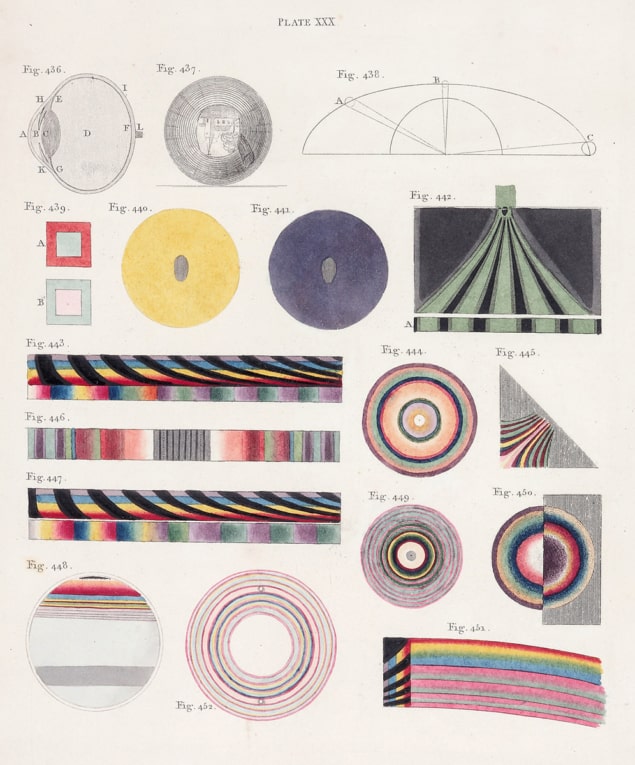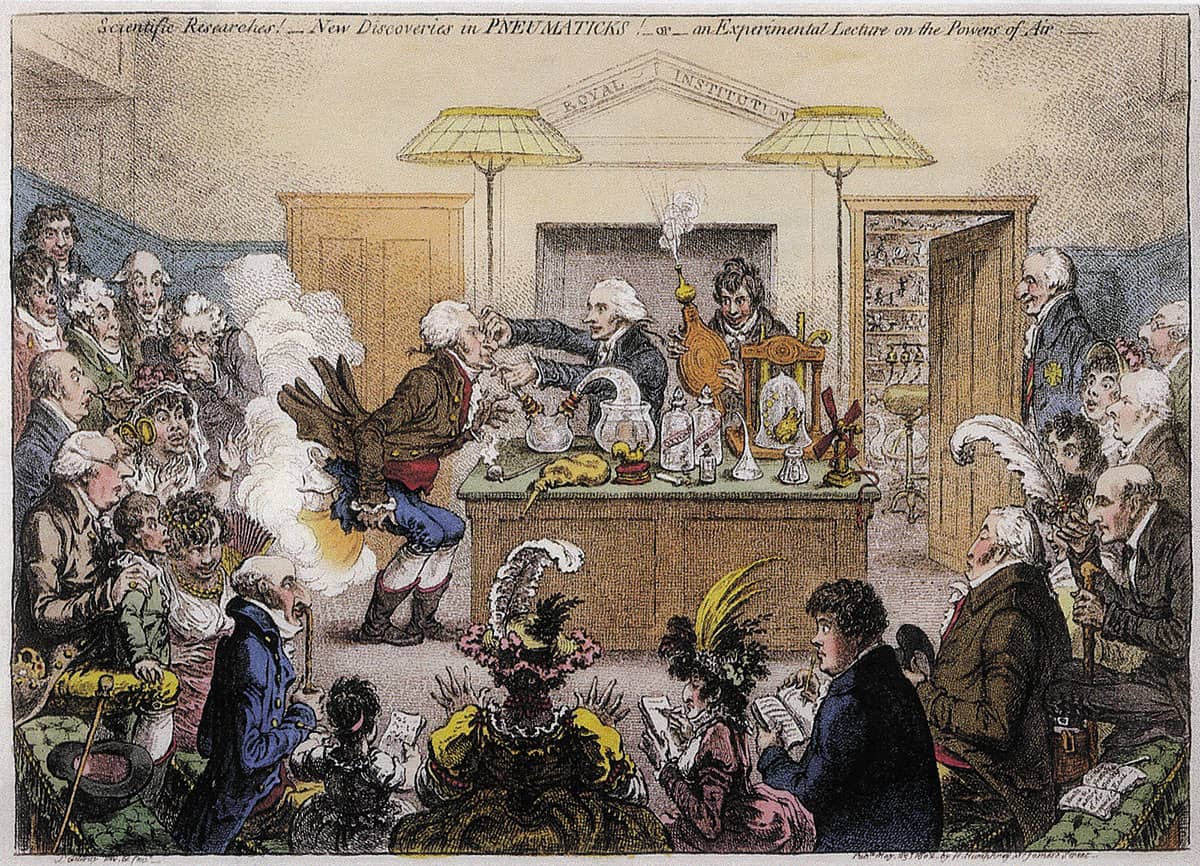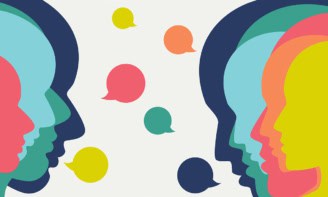To mark the 250th anniversary of Thomas Young’s birth, Martin Rees, the UK’s Astronomer Royal, highlights the wide-ranging expertise and discoveries of the maverick British scientist

- A version of this article was first published as the foreword to the second edition of Andrew Robinson’s The Last Man Who Knew Everything, to mark the 250th anniversary of Thomas Young’s birth. It is published under a CC BY 4.0 licence
“The experiment I am about to relate…may be repeated with great ease, wherever the sun shines and without any other apparatus than is at hand to every one.” That was how British scientist Thomas Young (1773–1829) described his newly devised double-slit experiment to the members of the Royal Society in November 1803. His experiment revealed a key aspect of the true nature of light, and today it forms one of the main pillars of quantum mechanics.
Physics students across the globe are familiar with this classic optical experiment (Young’s slits), as well as his definition of elasticity (Young’s modulus). But not everyone may be as aware of Young’s many other astonishing achievements across the sciences – covering everything from fluids to human vision – or the fact that Young was a trained physician and self-trained linguist. Not only did he understand many ancient and modern languages, he also analysed the vocabulary and grammar of some four hundred languages, and is especially celebrated for his role in deciphering the scripts on the Rosetta Stone.
“‘Physicist, physician and Egyptologist’ is how encyclopaedias struggle to summarize Young. Physics and physiology were his forte, physic his profession, Egyptology his penchant. But his expertise extended well beyond these vast (even in his day) fields of knowledge,” writes Andrew Robinson in the introduction of his book The Last Man Who Knew Everything. Indeed, Young’s writings were literally encyclopaedic, and he ranks as one of the most prolific polymaths in history.
Young was remarkable from his early childhood in rural England in the 1770s. The first chapter of Robinson’s book outlines how Young was exceptionally precocious in languages and in mathematics. Some “child geniuses” burn out in adulthood, but Young emphatically did not. His youthful accomplishments were a precursor to the brilliance and breadth he displayed throughout his life – which ended in 1829 when he was only 55.
At a glance: Thomas Young
- Thomas Young is best known for demonstrating the phenomenon of interference, which led him to promote the wave theory of light in opposition to Newton’s then-dominant idea that light was composed of particles
- A polymathic mind, Young gave a brilliant series of lectures to the Royal Institution in 1802–1803 containing insights into mechanics and heat that were only fully appreciated years later
- He was the first person to use the term “energy” in its modern scientific sense as a measure of a system’s ability to do work
- Young was also the first physicist to estimate the diameter of a molecule
- He even linked heat and light as one phenomenon, and proposed the modern concept of a continuous spectrum of radiation, in which wavelength rises as frequency falls
- In addition to his work in physics, Young was a celebrated physiologist, physician and linguist, who inaugurated the decipherment of Egyptian hieroglyphs
Societies and the spirit of enquiry
An important advantage for Young was that London, at the turn of the 18th century, offered a culturally vibrant and stimulating atmosphere. As described in The Age of Wonder, Richard Holmes’ fascinating book about science in this Romantic period, there was an intermingling between the arts and sciences. The fruits of discovery by explorers and naturalists such as James Cook and Joseph Banks, melded with the creativity of poets like Samuel Taylor Coleridge and Percy Bysshe Shelley. There was no split between “two cultures” but instead boisterous interactions between scientists, literati and explorers.
This spirit of enquiry dated back at least to the beginnings of the Royal Society in 1660. The society’s founding members – Christopher Wren, Robert Hooke, Samuel Pepys and other “ingenious and curious gentlemen” (as they described themselves) – met regularly. Their motto was to accept nothing on authority. They did experiments, dissected weird animals and peered through newly invented telescopes and microscopes. One experiment even involved the transfusion of blood from a sheep to a man (who survived the procedure).
However, as well as indulging their curiosity, these pioneering scientists immersed themselves in the practical agenda of their era: improving navigation, exploring the New World, and rebuilding London after the Great Fire. Some of them were deeply religious, but their scientific inspiration was Francis Bacon, who envisioned two goals to which scientists should aspire: to be “merchants of light”, and to promote “the relief of man’s estate”. A century or so later, the American Philosophical Society was founded in Philadelphia for the “promotion of useful knowledge”, with the polymathic Benjamin Franklin as its first president.
The 18th-century Royal Society encouraged young talent. Young was elected a fellow in 1794 after presenting a paper on the structure of the human eye, and how it “accommodates itself to the perception of objects at different distances”. He was only 21 years old at the time, but such early admission to fellowship – and on the basis of just one paper – was less exceptional then than it would be today. Young remained active in the society for the rest of his life, but it is unlikely to have offered him great stimulus. Indeed, many of the fellows at the time were well-heeled amateurs with zero pretensions to scientific achievement.

By the late 18th century, the Royal Society – much like the universities of Oxford and Cambridge – was far from vibrant. Instead, the lively interest in science in London led to the foundation of other learned societies in the early 19th century. Some were specialized – such as the Linnean Society and the Royal Astronomical Society – but one of them, the Royal Institution (RI) founded in 1799, genuinely rivalled the breadth of the Royal Society.
The RI was bankrolled by a hyper-talented but roguish adventurer, Benjamin Thompson, Count Rumford, who donated sufficient funds to provide a fine building on Albemarle Street in central London. Rumford’s most famous scientific contribution was his theory of heat, thanks to his experiments on gunnery and explosives. Rather than heat being a substance, “caloric”, he realized – by studying the process of boring a metal cannon – that heat was generated by the agitation of atoms and molecules.
Rumford envisaged the RI’s mission as not only research and experimentation, but also as dissemination of scientific understanding among the wider population. Indeed, the RI was fortunate in the calibre of its first two directors, Humphry Davy and Michael Faraday. Both were outstanding scientists but also promoted outreach, mainly via weekly “discourses”. These were lectures that attracted many of the London elite and continue today, albeit with less allure. Young was one of the first to hold a professorship there, from 1801. Though not a charismatic lecturer like Faraday, his talks were comprehensive, and their published versions remain an important source for understanding the state of knowledge in that era.
Beyond the “gentleman scientist”
By this time, Young had also begun to establish himself as a professional medic. Though cushioned by a modest inheritance, he was not wealthy enough to be a lifelong gentleman scientist. He had studied medicine in London and Edinburgh, and pursued further studies in Göttingen and Cambridge during the 1790s. His training allowed him to support himself as a physician, but medicine’s time-consuming professional commitments render his scientific achievements all the more remarkable.
Throughout his medical work, Young retained contact with the Royal Society and became its treasurer, and then its foreign secretary in 1804. In his later years, he was sounded out about taking the presidency, but declined because he did not relish committee work and official activity.
Nevertheless, he undertook important administrative roles. Pre-eminent among them was secretary of the Board of Longitude and superintendent of its Nautical Almanac from 1819. This body had, famously, been established in 1714 to offer a prize of £20,000 to the person who could devise methods of determining (within a specified precision) the longitude of a vessel at sea. Following the success of John Harrison, a carpenter and clockmaker from Yorkshire, the board remained in existence for more than a century, funding expeditions and novel scientific instruments. It was, in essence, the first research council.
The present-day frontiers of our understanding are more extended and harder to reach, and that is why we can never expect modern scientific polymaths who can range as widely across frontiers as Young
Meanwhile, its annual Nautical Almanac tabulated the positions of heavenly bodies. High-precision data were of course crucial for astronomers, but navigators at sea wanted something simpler and more robust. Their inevitable divergence of view proved deeply contentious and led to the dissolution of the Board of Longitude in 1828, which proved to be a stressful diversion in Young’s later years.
This split between experts was an early instance of the balkanization of the map of learning: a trend that has continued to the present day. Scientific understanding has vastly increased, and most research involves elaborate equipment and team efforts. The frontiers of our understanding are more extended and harder to reach, and that is why we can never expect modern scientific polymaths who can range as widely across frontiers as Young.
Buried and forgotten
As Robinson notes in his book, quoting the words of the great 19th-century physicist and physiologist Hermann Helmholtz (with whom Young shares posthumous credit for the three-colour theory of colour vision), Young was “one of the most acute men who ever lived, but had the misfortune to be too far in advance of his contemporaries. They looked on him with astonishment, but could not follow his bold speculations, and thus a mass of his important thoughts remained buried and forgotten in the Transactions of the Royal Society until a later generation by slow degrees arrived at the rediscovery of his discoveries, and came to appreciate the force of his arguments and the accuracy of his conclusions.”
Of course, in the early 1800s some technologies and crafts were already professionalized and had incrementally advanced over several centuries: cathedrals, ships and bridges were built with a sophistication still amazing us today. Steam engines were improved without formal input from the subject of thermodynamics. But far less intellectual effort was deployed in what we would now call “science” – understanding the physical world and its governing principles – than in the “useful arts”.

Indeed the word “scientist” did not exist in the time of Young. It was introduced in 1833 by William Whewell: a polymath and a scholarly grandee at Cambridge, who nevertheless opposed the formal teaching of science, averring that the young should focus on the eternal verities of mathematics and theology. Only later did science become an established profession – and a proper part of the Cambridge curriculum, leading to the symbiosis between “pure” and “applied” science whose consequences have shaped the modern world.
For all his formidable talent, erudition and prescience, Young was a modest and genial human being. One can imagine him being genuinely supportive and comforting to his medical patients, even though he would have known better than anyone how little could be achieved by the medicine of his time. In an era before the invention of anaesthetics or the emergence of the “germ theory” of disease, much of medicine was based on the anatomical knowledge and dexterity of surgeons, and on the potions of apothecaries.
Being a polymath, Young has tended to be underappreciated by posterity, both for his achievements and for his personality. Young himself was dubious about polymathy, writing not long before his death, “It is probably best for mankind that the researches of some investigators should be conceived within a narrow compass, while others pass more rapidly through a more extensive sphere of research.”
As a contemporary Oxford historian with an interest in polymathy, Alexander Murray explains, “History is unkind to polymaths. No biographer will readily tackle a subject whose range of skills far exceeds his own, while the rest of us, with or without biographies to read, have no mental ‘slot’ in which to keep a polymath’s memory fresh. So the polymath gets forgotten, or, at best, squashed into a category we can recognize, in the way Goethe is remembered as a poet, despite his claim to have been a scientist, or Hume as a philosopher, for all the six dumpy volumes of his History of England.”
We should be grateful then, that Robinson has surmounted these challenges. By portraying Young from a broad and engaging perspective, he brings a great polymath to life in his biography.
- The Last Man Who Knew Everything: Thomas Young, the Anonymous Polymath Who Proved Newton Wrong, Explained How We See, Cured the Sick, and Deciphered the Rosetta Stone, Among Other Feats of Genius by Andrew Robinson is published by Open Book, DOI:10.11647/OBP.0344



